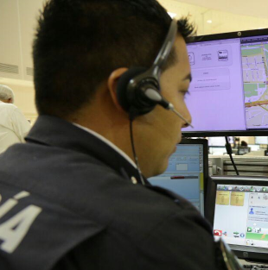Background & Role
Alejandro has over 12 years of experience in public safety communications, starting as a call taker before transitioning into the dispatcher role. At Mexico City’s C5, he is responsible for evaluating the incoming information from call takers, assigning appropriate resources, and coordinating a rapid, efficient response with police, fire, and emergency medical services. His work involves constant collaboration with first responders, ensuring that the right teams are dispatched to each incident, and monitoring ongoing situations to adapt plans as needed.
Goals & Challenges
Primary Goals
- Accurately assess incident severity based on caller information and situational data.
- Efficiently allocate and coordinate the dispatch of first responders.
- Maintain continuous, clear communication with multiple teams during emergencies.
Key Challenges
- Managing multiple incidents simultaneously
- Ensuring flawless communication between diverse teams
- Coping with technical issues such as system glitches or radio failures
- Handling extreme stress while making rapid, high-stakes decisions
Decision Making Process
Once Alejandro receives key information from call takers, he rapidly evaluates the criticality of the situation, determines resource availability, and dispatches the appropriate units. His process involves cross-checking data on CAD systems, mapping tools, and radio communications to ensure that all responders have clear instructions and that resources are optimally allocated.
Decisions must lead to rapid dispatch, with measurable improvements in response times.
Seamless interoperability between CAD, mapping software, and communication channels is critical.
Correctly triaging incidents is essential to optimize resource allocation under pressure.
Continuous updates and coordination with on-field units ensure safety and operational efficiency.
Summary of Alejandro's Journey
After a call taker inputs critical incident data, Alejandro is immediately alerted to assess the situation.
He cross-checks the details using CAD and mapping tools to verify the incident’s location and urgency.
With a clear understanding of the situation, he dispatches the most appropriate emergency teams and communicates specific instructions tailored to the incident.
Alejandro remains on the line with field units, providing updates and adapting the response as the situation evolves.
Tech Stack & Tools
Communication Preferences
- Channels: Radio, In-situ command systems, and Internal multimedia messaging
- Content: Direct, concise, and clear instructions
- Format: Voice, with supplemental text for record keeping
- Frequency: Continuous communication as the situation unfolds
Pain Points / Frustrations / Fears
- Miscommunication or delays due to technical failures
- Overlapping incidents that stretch resource availability thin
- Uncertainty about the accuracy of incoming data under high-stress conditions
- Concerns over burnout and managing personal stress levels
